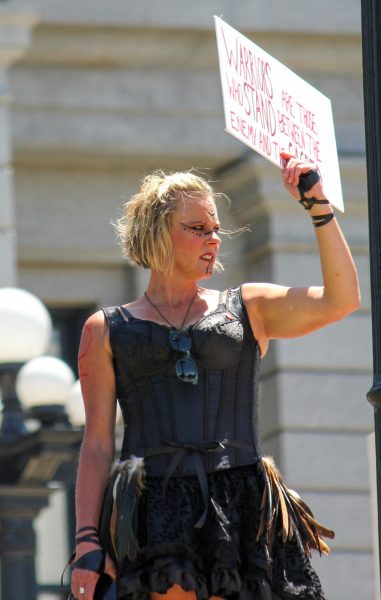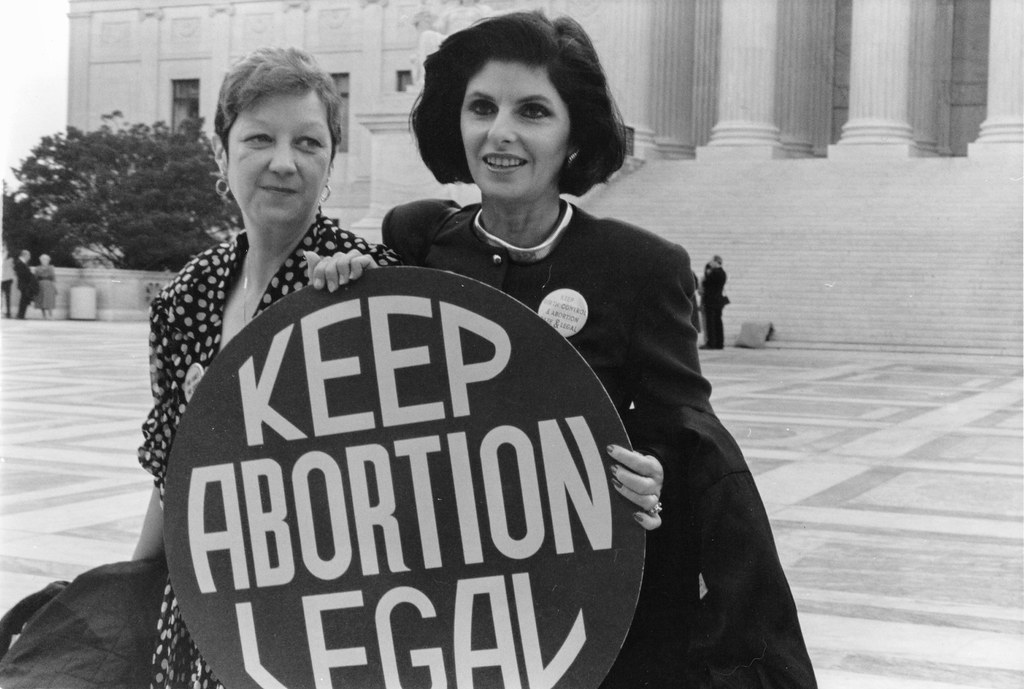In 1970, Norma McCorvey, under the pseudonym Jane Roe, was denied access to an abortion under Texas state law, sparking a debate that divided the country. Fast forward more than 50 years later, and America still cannot reach a consensus on abortion.

The case of Roe v Wade was the first of its kind in the United States, preserving abortion as a national right, after state and local governments moved to limit access. The Texas state law that barred Roe from accessing an abortion stated that pregnancy can only be terminated if it is for the purpose of saving the life of the mother. She argued it violated her constitutional right to privacy.
When Roe filed a federal action in the U.S. Supreme Court against Dallas County District Attorney Henry Wade, the court ruled in favor of neither party. Instead, they ruled on a trimester-based decision.
According to the Cornell Law School Legal Information Institute, the controversial ruling permitted abortion without regulation in the first trimester. During the second trimester, the abortion was still the woman’s decision, however, the states were allowed to regulate without outright bans. States were given the authority to prohibit third-trimester abortions but were obligated to permit them in the case of a life-threatening situation.
In the five decades following the 1973 abortion ruling, numerous regulations and limitations have been implemented. Each state maintains its own set of rules governing women’s reproductive rights. However, until recently, the federal right has always been constitutionally mandated.
In May 2022, a historic security breach at the Supreme Court leaked an opinion written by Justice Samuel A. Alito, Jr. In the document, it was revealed that in the case of Dobbs v Jackson Women’s Health Organization, which considered Mississippi’s abortion law, the Supreme Court would rule in favor of overturning Roe v Wade.
In June 2022, the decision came, and as expected the law was overturned.
In the 50-plus years since the initial Roe v Wade ruling, the U.S. has seen significant shifts in both policy and societal perspectives. Many countries are beginning to lean towards the idea of legalizing abortion, empowering women to make decisions regarding their pregnancies, with a seemingly equal amount leaning towards banning abortion, emphasizing the woman’s responsibility for safeguarding the life of the unborn child.
In 2022, the Pew Research Center surveyed America’s opinions about abortion. The findings revealed that 8% of Americans hold the belief that abortion should be illegal in all cases, 19% believe it should be legal in all cases, and 71% support abortion regulation with exceptions.
I met with two women on both sides of the issue to see how they truly differ from each other.
One woman, choosing to go under the alias Sherri R., identifies herself as an anti-abortion activist. She regularly protests outside of abortion clinics similar to Planned Parenthood.

“Life does indeed begin at conception. We believe in the value of protecting life. All human life”, Sherri said. “This might sound harsh but unless you’re raped, you’re kind of making the decision to perform an act where you could potentially become pregnant, so maybe we should be thinking about that before we’re performing those acts.”
On the opposite end of the issue, Colorado State University Junior, Haley Rodriguez identifies herself as an abortion rights advocate.
Understanding both side’s views is vital to having this conversation, but it’s the topic of exceptions that seems to be a major issue. There is a stigma around both sides, being seen as unbudging around topics like rape, incest, and the viability of pregnancy
In 2019, the Guttmacher Institute conducted a survey, finding that 1% of all abortions were due to rape, and 0.5% of all abortions were due to incest.
“In the case of rape and incest the percentage of women getting an abortion is less than 1%, it’s low, a lot of times people will come up to us and try to throw that in our faces,” Sherri said.
It is important to note that the previously mentioned study by the Guttmacher Institute found that 75% of all sexual assaults go unreported. Abortion statistics only take into account cases that were reported.
“[A man] should be prosecuted to the fullest extent of the law because he has now forced himself on her and forced her into carrying a child for 9 months. It’s horrible. But the problem of having an abortion is that now we’re compounding two traumas, instead of having one trauma and giving the baby life … Something bad has happened to you and now you’re killing your baby over it,” Sherri said.
On the side of abortion advocacy, Rodriguez argued, “I think of course there are certain circumstances where it becomes an ethical issue, but in early stages, if you realize you’re pregnant and you don’t want to have the baby, I feel like that is your choice. I feel like there should be limitations, but if it’s harmful to the mother, or she just doesn’t feel prepared for a child, there should be an option where she gets to choose what to do with her body.”
While both sides agree the current foster care system is less than desirable, they differ on how to move forward.
“Our foster care system is pretty screwed up, but we as individuals can only do so much,” Sherri said. “I, as a person, can’t fix the foster care system, but what I can do is offer some resources. … We try, one family, one girl at a time… A lot of girls say they ‘can’t fathom giving my baby away’ and yet they’ll go in and end the life of the baby. To me, that doesn’t make a lot of sense.”

Where anti-abortion advocates feel we should provide selective aid to new mothers and babies, to boost adoption and the amount of mothers keeping their babies. Abortion Advocates believe we should work on the system that currently exists before we introduce more children into it.
“If [women] are forced to have the baby and they can’t keep it or [don’t] want it, it will wind up in foster care,” Rodriguez said. ”There are so many kids in foster care that don’t have homes, don’t have families to love them. Why make someone carry their child that will be put into the foster care system when we already have so many children who need homes.”
Now that Roe v Wade has been overturned, there are no federal regulations on abortions. The states are free to develop their laws and are allowed to ban abortion with no exceptions.
“The government should work for the people, and letting states ban this, simply isn’t for the people… Just because it’s not acceptable for lawmakers doesn’t mean it isn’t acceptable for the people,” Rodriguez said.
Rodriguez, an animal science major at CSU, continued, “Animal ethics say that if the mother is not going to make it during birth, you do whatever you can to save the mother. It doesn’t matter what term or gestation the baby is in, you save the mother”.
When asked how she felt about states having the ability to ban abortions with no exceptions, Sherri said, “I guess it’s up to the states to decide”.
Roe v Wade introduced America to federal policy around a woman’s right to choose and set a precedent that lasted for almost 50 years. Today, we’re no closer to a resolution than we were in 1970.








